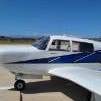Turbulence and maneuvering speed
-
Members Online
- geoffb
- EKoS
- mooneyflyfast
- katzhome
- LANCECASPER
- Schllc
- Scuddmissile
- PeterRus
- 201Mooniac
- christaylor302
- Rmfriday
- Pinecone
- mooney_flyer
- 802flyer
- Bolter
- ericrynehess
- crustymuffin
- Fly Boomer
- N201MKTurbo
- Adam Belle
- Andy95W
- Lumberg
- Stubby
- NickG
- graham28105
- ArtVandelay
- andrewn
- SKI
- Peter T
- 1980Mooney
- Hank
- jordanjms
- 7.Mooney.Driver.0
- Slick Nick
- AlexC1201
- Steve Dawson
- Mobius708
- Nathaniel_H


Recommended Posts
Join the conversation
You can post now and register later. If you have an account, sign in now to post with your account.